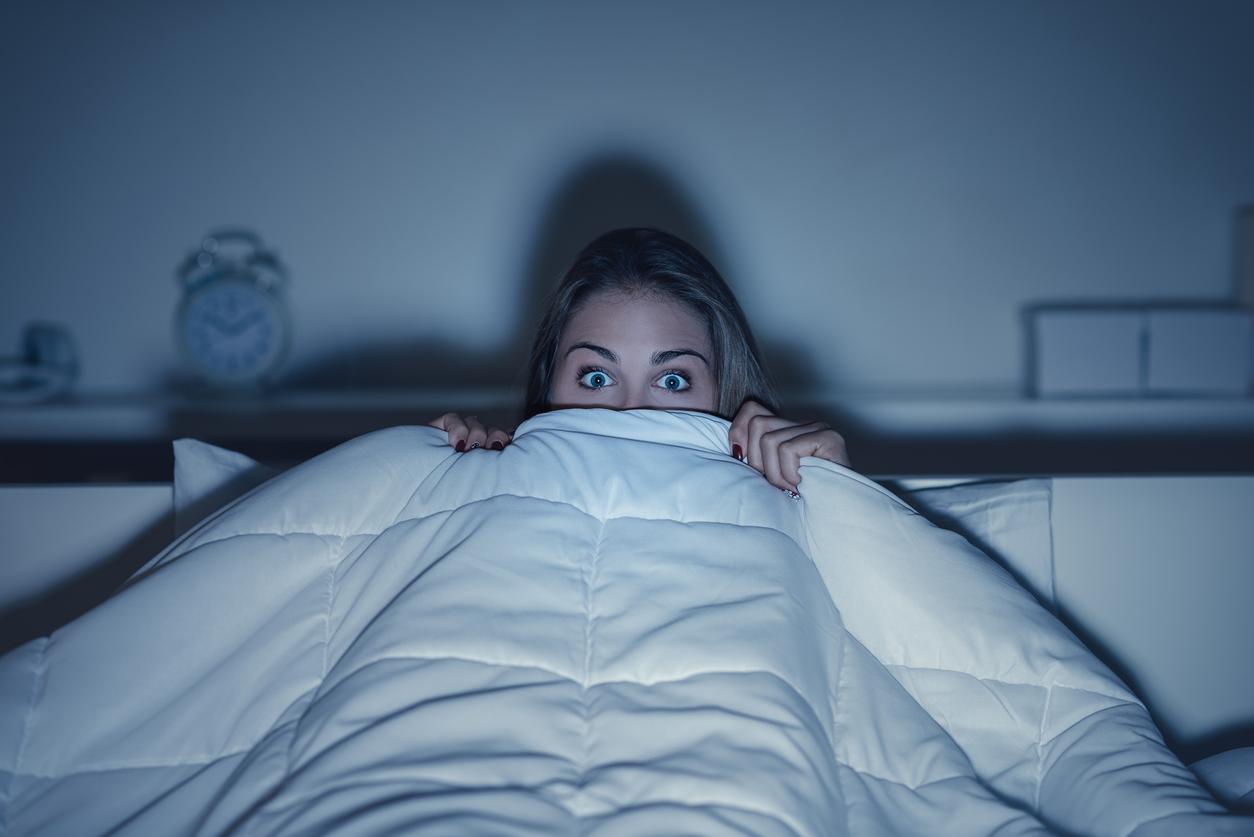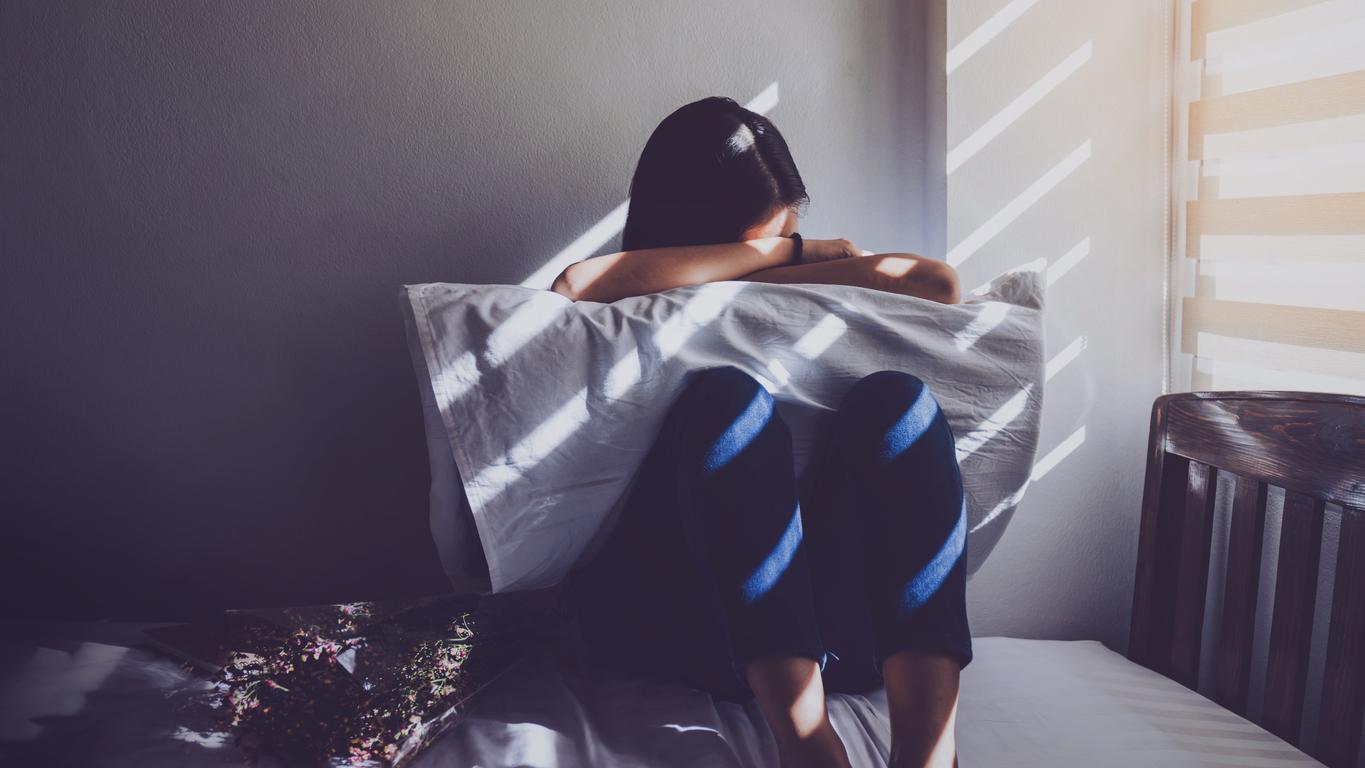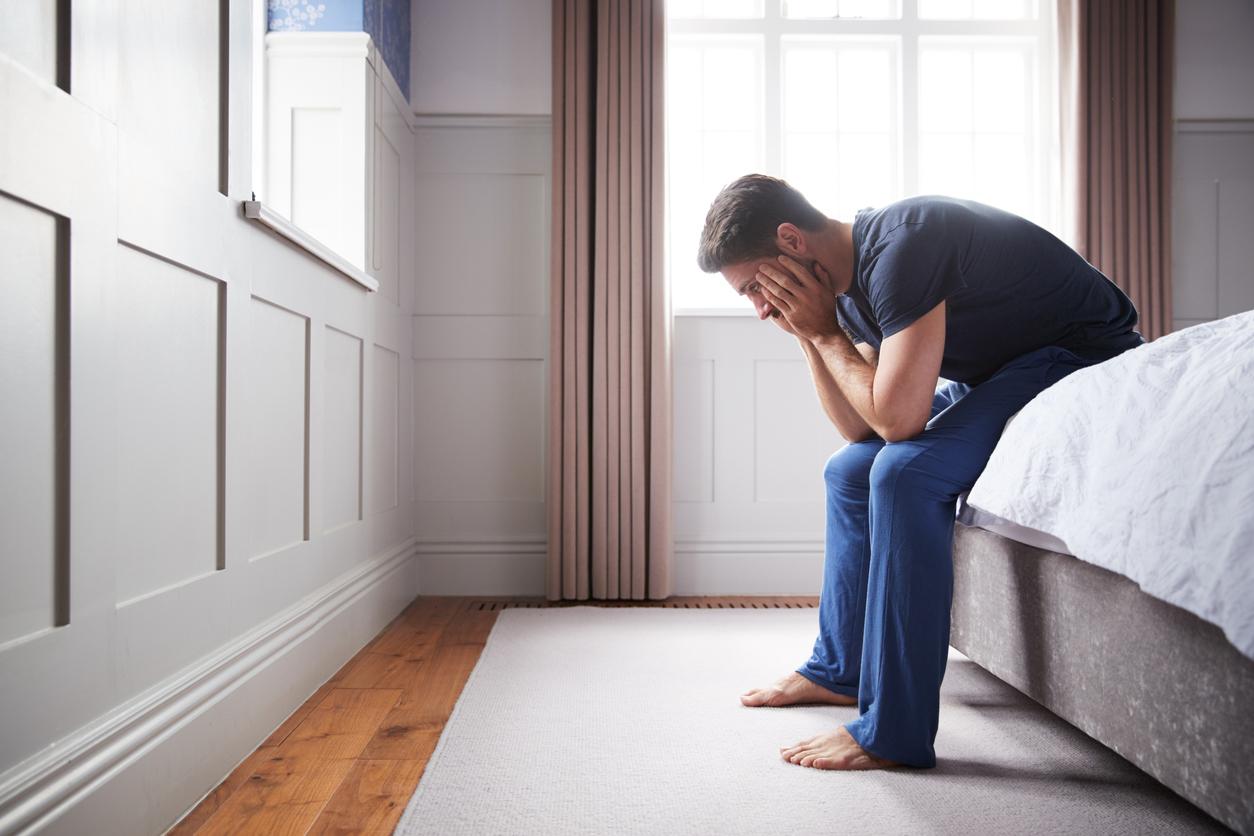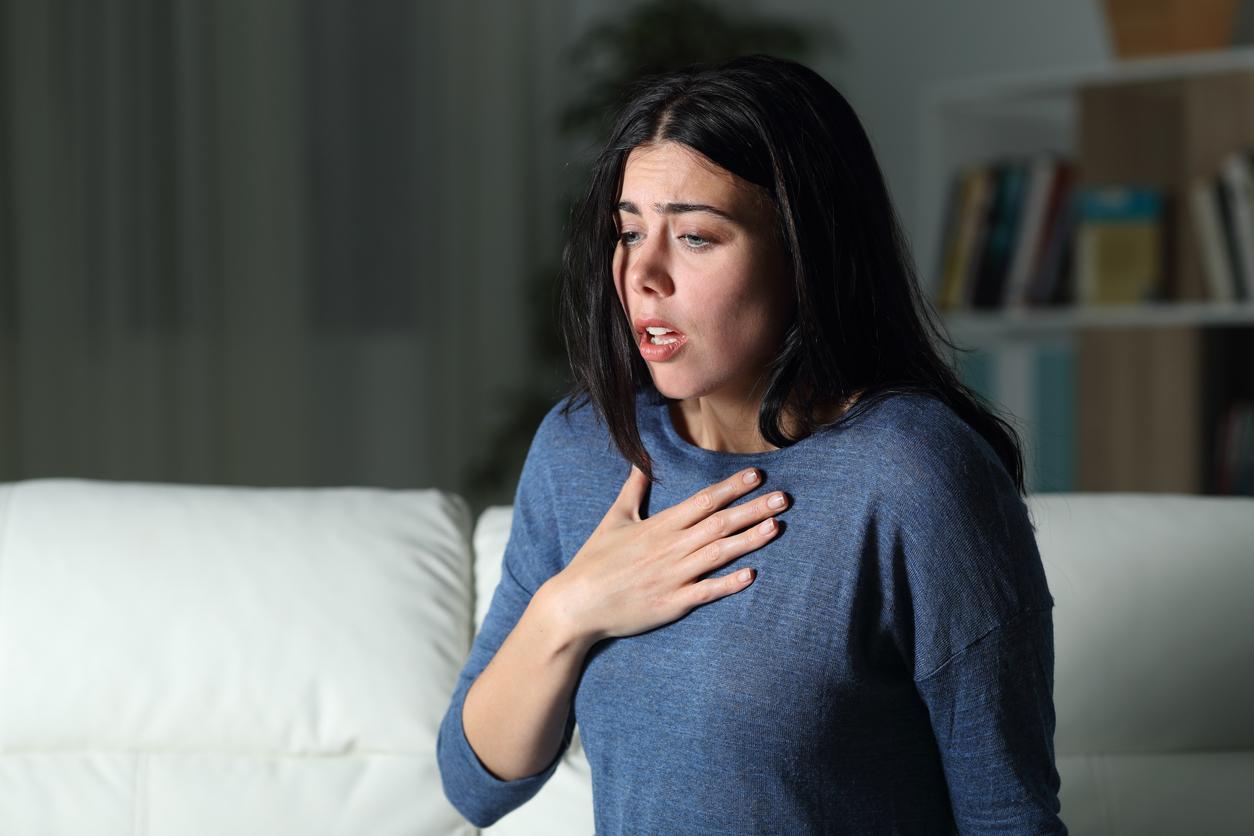Shallow breathing, palpitations, sweat, nausea, feeling of strangulation … No doubt, this is a panic disorder. But it gets complicated when panic arises from the fear of feeling these symptoms, in anticipation. This “fear of fear” is the definition given to agoraphobia in 1871 by Carl Westphal, German neurologist and psychiatrist. “Today, we speak more of ‘fear ofto fear‘and’ anxious anticipation ‘ “explains Doctor Franck Peyré, psychiatrist in Bordeaux, specializing in depressive and anxiety disorders. Often equated with fear of crowds or closed spaces, agoraphobia is not however limited to this type of context. disorder is the fear of experiencinganxiety, or panic, in a given situation where fleeing or calling for help may be difficult (for example taking public transport, being in the middle of a crowd, in a store or in a queue. .).
The agoraphobe is afraid of symptoms of anxiety
The agoraphobic person dreads these situations constantly, because his sense of danger is disproportionate to the real danger. She may also fear a specific negative outcome (such as a panic attack or embarrassing or disabling physical symptoms). “Agoraphobia occurs when you feel that you will not be able to cope with the manifestations of anxiety.“explains Franck Peyré. These feared manifestations are the classic symptoms of panic attacks, which the agoraphobe may fear without even having already experienced them:”dizzying floating, feeling of imminent death, feeling of falling, feeling of going mad …“, describes the psychiatrist. It is therefore an interoceptive phobia, that is to say centered on bodily manifestations.
Fearing his own physical sensations, the agoraphobe will adapt his behavior so as not to feel them, most often avoiding situations that are sources of panic. She will also be able to accept these situations under certain circumstances, for example by being accompanied by a trusted person, or will endure them with intense fear or anxiety.
No clearly identified causes for agoraphobia
But what are the origins of this phobia? “There are no identified risk factors, or a history of personal history“, deplores Franck Peyré.”For a long time it was thought that agoraphobia was linked to an attachment or addiction problem during childhood, but this has proven to be incorrect.Likewise, the situation causing the symptoms may have been associated with a panic experience in the past, but this is not systematic.
In fact, agoraphobia affects women more than men and may depend on a context that suddenly increases sensitivity to inner feelings. “Agoraphobia, for example, is a frequent complication of a depressive episode of bipolar disorders“specifies the psychiatrist.
Behavioral and cognitive therapy for agoraphobia
These disorders are recognized and described in international classifications, which allows psychiatrists and psychologists to reliably diagnose them. But once the diagnosis is made, how to cure this phobia? “For pure agoraphobia, when not associated with another disorder, there is no drug treatment. Medicines can relieve but will not remove symptoms“explains Dr. Peyré. The only effective treatment for agoraphobia is then behavioral and cognitive therapy(TCC). It is a brief therapy (from a few months to two or three years) which aims to replace negative ideas and inappropriate behaviors with thoughts and reactions in line with reality. “The important thing in this therapy is the functional analysis: understanding how the disorder works and why it lasts despite the patient’s best efforts.“, supports Franck Peyré.
With CBT, the patient does a real work of learning to become aware of his inner resources. He will identify the tips he has put in place to manage his fear or reduce symptoms (such as never going out without being accompanied, putting on dark glasses to isolate himself …) Once these behaviors have been identified, they will have to be combated. because “it is precautionary or security behaviors that fuel vicious circles“warns the psychiatrist. CBT will teach you to” tame “anxiety,”make the patient understand that anxiety is not synonymous with disaster“.
“The agoraphobe should not judge himself as a weak person”
When the symptoms persist for several months, they may prove to be severe enough to worsen the condition of the phobic’s personal, family, social, educational or professional life.
If the latter does not tame his fear, the risk is that he becomes dependent on others. “This is often the case for an agoraphobic in a relationship who will totally depend on his spouse.“notes Franck Peyré. For the spouse as well as for those close to the phobic,”there is a form of common suffering, incomprehension, harassment, which sometimes requires consulting a specialist for help“recommends the psychiatrist. And for the agoraphobic person himself,”the sooner she will consult after the first symptoms, the easier it will be to learn new resources. Either way, she shouldn’t judge herself as a weak person“, advises the psychiatrist.
Dr Franck Peyré is the author of two books on generalized anxiety disorders and agoraphobia.
Dealing with TAGs (generalized anxiety disorder), Retz editions, 2014.
Coping with Agoraphobia, Retz editions, 2006.
Sources:
– Interview with doctor Franck Peyré, psychiatrist in Bordeaux, specialist in depressive and anxiety disorders.
– French Association of Behavioral and Cognitive Therapy (AFTCC)
– Diagnostic and Statistical Manual of Mental Disorders. American Psychiatric Association. Editions Masson 2011
– International Classification of Diseases (ICD) of the World Health Organization (WHO)
>> To read also:
Fear: a psycho-body ritual to calm down
Online cognitive behavioral therapy reportedly helps patients with dysmorphophobia
Social phobia: what’s behind it?
She posts pictures of her panic attacks on Facebook
















